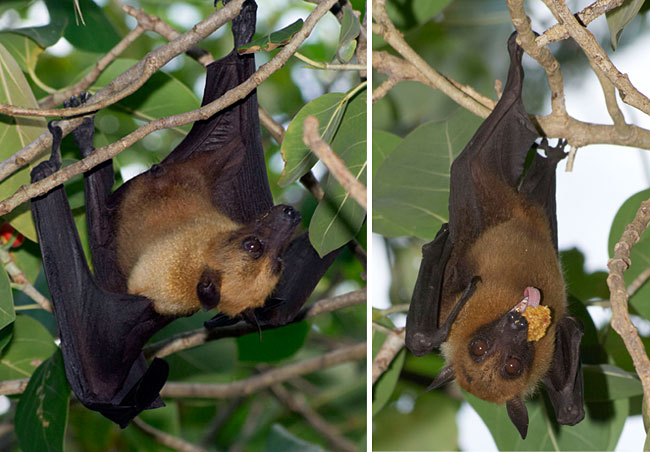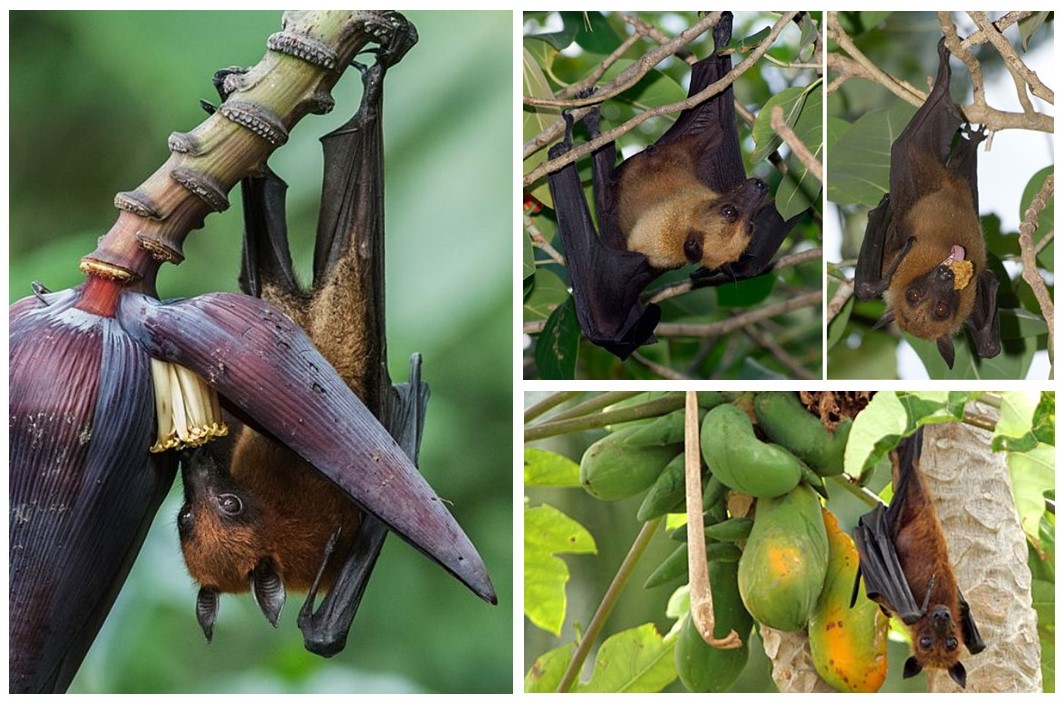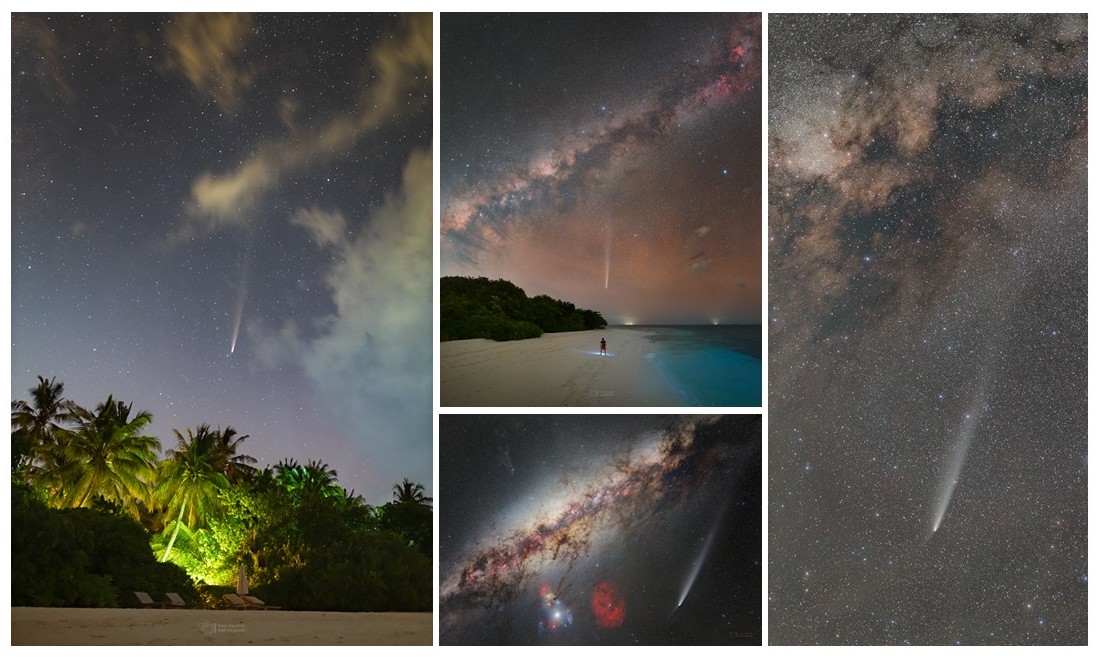Indian Flying Foxes feed mainly on nectar, pollen and ripe fruits. Papaya and mango are the predominant food on Thoddoo Island, but it doesn’t disdain bananas. It is sometimes referred to as a “fruit bat” because when it hangs on trees it looks like dark fruit. Fruit bats are nocturnal animals, they fly for food in the evening or in the morning, during the day they can only be reached exceptionally. The overall color of the Indian fruit bat is darker than that of the Egyptian fruit bat. They have almost black heads and wings.

https://commons.wikimedia.org/wiki/File:Indian_flying_fox.jpg
Photo: Manojiritty Wikimedia Commons
Seeing flying fruit bats is a unique experience for those who are accustomed to the fluttering of the songbirds or the dignified circling of birds of prey. It’s not a beautiful ride, but the acrobatics of a big bat in the sky is magical. From a distance, the inexperienced eye can mistake a fruit bat waving its wings deliberately for a crow, but soon it is exciting to know the truth.
Taking photos of fruit bats directly in flight is not easy, although their flight seems lazy. In fact, it is very fast, usually short, and before the photographer recovers, this flying fox, as it is nicknamed, will fly over the crown of palm trees or settle in a dense branch mangrove. There’s hard to find.

http://www.bluepeacemaldives.org/news2008/bat.htm
Photo: Eagan
Reproduction. Fruit bats breed from July to October. They copulate in the branches of trees. A single offspring borned by the female after a long pregnancy of five months.
The population of fruit bats on Thoddoo is not very large on this small island; there are dozens of individuals. With a more significant number of individuals form colonies dwelling in the branches of trees. The colony is then precisely defined hierarchy of individuals. The highest ranking occupies the highest branches of the tree. If the female has a chick, the ladder advances higher and occupies the most advantageous places.
Fruit bats communicate with a wide range of diverse speeches; more than twenty have been described. They live to the age of 30 years.

http://www.bluepeacemaldives.org/news2008/bat.htm
Photo: John Michael
Fruit bats play an essential role in the Maldives atoll ecosystems, where they are involved in seed distribution and pollination because there are few birds and insects. They spread the seeds of the mother trees through droppings or directly by transfer of fruit over long distances. Only flying mammals can spread large seeds from island to island -they distribute the pollen grains of plants, including agriculturally important crops such as mangoes, bananas, guavas or coconut trees.





